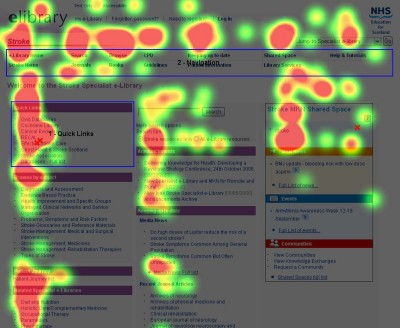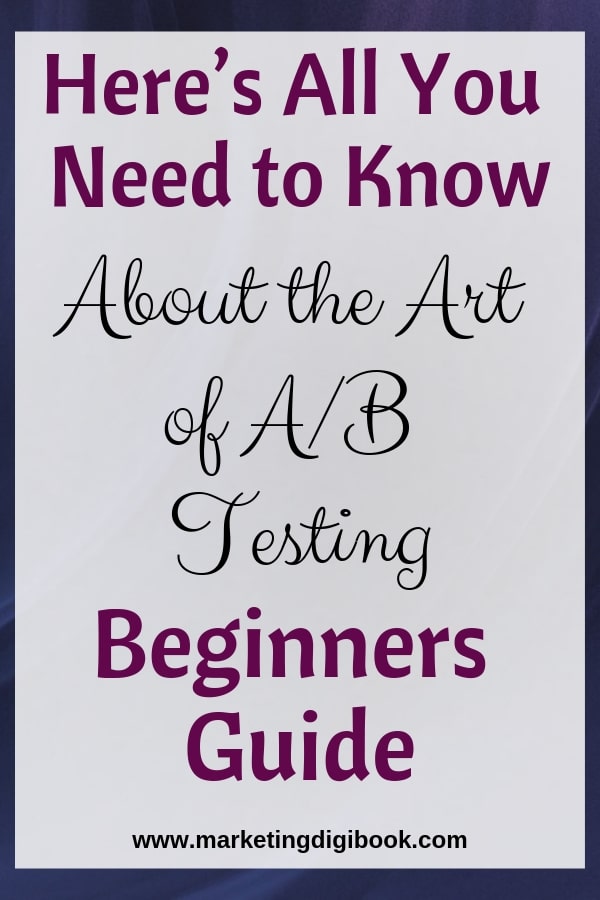Anyone in business, whether new or experienced, wants their message or product to impact their target and eventually have high conversions or gain more customers, right? Site owners often leverage analytics on their sites but most of them forget to leverage the data to improve their marketing performance. But without actively testing with A/B testing tools, it’s dicey trying to improve on your efforts.
A/B testing statistics enable you to get familiarized with your target audience by allowing them to have more of what they want while you get to deliver your message in a way that will earn better responses, which in turn builds better relationships and subsequently more customers.
Remember, the markets are constantly changing, so testing is your path to adapt quickly and stay on the cutting edge.
What Is A/B Testing in Marketing?
It’s the process of comparing two versions or elements of a webpage, email, or other marketing assets with just one other varying element or version to see which one performs better.
Invest In Your Business
Your Content Strategy Doesn’t Deliver the Expected Results?
How Does A/B Testing Help? – Benefits
As different as businesses are, so are their goals. However, there are some common goals that markets have for their businesses, which make for great reasons to run A/B tests.
As soon as you have a website for your business, you will need to know whether it’s helping your sales or hindering them. So, here are a few goals that couple as benefits as to why it would be good to do some A/B tests:
- It will let you know what keywords, phrases, videos or images are working best for your business.
- It will improve your SEO by impacting the speed at which your page loads because you can determine whether the changes you made on your site affected the page loading time. Fast loading speed means improved conversions. Google’s top ranking. Speed is one of its ranking factors because they also want to offer its users a fast and seamless experience.
- Increased web traffic as a result of tested keywords, webpage titles, CTAs, etc.
- Decreased bounce rate also as a result of testing alternative fonts, images, or post introductions.
- Decreased cart abandonment as a result of reconsidering different product images or even page designs.
If you top the above benefits with the fact that these tests are low-cost, then you will benefit from some great value.
When Should You Run A/B Tests?
Well, ideally this should be a frequent exercise as long as you have a website with an audience and a business running. This is one easy way to get an edge over your competitors.
With that said a more established business that has been around for some time has a higher chance of getting more accurate results as compared to a brand-new one. This is because an established business already has the traffic that can offer the test samples in the correct business cycle (that is 2 to 4 weeks) and this makes the results a bit consistent.
This is not meant to pour ice water on the brand-new business; it only means that the results may not be very conclusive. A brand new business is yet to gain traction on what to test. It’s yet to understand the conversion rates or its traffic. But after some time, this is easily established.
Terms Used in A/B Testing
Control
This means the already existing design or page or element.
Variant/Challengers
This means the new versions of your landing page or element that will be tested.
Which Are the Most Effective Elements for A/B Testing?
While there is no specific formula or even a best practice that can suit all businesses, there are a few irrefutable elements that can effectively be tested. Here are a/b testing examples for various elements:
1. A/B Test Landing Pages
A landing page has the vital job of helping you achieve your specific goal which could be to showcase your brand, capture leads, and get users to click on another page, or get them to make a purchase. A well-designed landing page can be the force behind purchasing relationships whether by individuals or business to business.
Given how important it is to meet these goals, it’s therefore vital to optimize them for usability and conversions. Using a heat map, you’ll be able to see where people are clicking the most on your landing page and use this data to know which elements are most important for an A/B test.

Source: TechSupportAlert
2. Email Marketing
This is quite simple. All you need is to send version A to 50 percent of your subscribers and version B to the remaining 50 percent. When allowed to run long enough, this will give you significant results to know what’s working and what’s not based on the elements on the page or form and the fact that an equal number of people saw each variation.
Another element under this is the subject line. If the email subject line isn’t something relevant or catchy to your audience, the probability of your email being opened to being thrown in the trash is 1:9. Therefore testing the subject lines can definitely increase your chances of getting more clicks, try questions instead of statements or even subject lines with emojis and without.
3. A/B Test Product Descriptions
In many cases, short product descriptions work best because the consumer only wants simple, direct-to-the-point, and easy-to-digest content. However, in other cases, the product may require a little more detail of its highlights listed down, e.g. electronics, here you can test the short versus long descriptions to see which one converts more.
[interact id=”5b8ed2e728483b00147dabf7″ type=”quiz” mobile=”false”]
4. Deep vs. Shallow Content
Consumers have various preferences when it comes to most things (besides quality and value of course). Therefore, you will find some that prefer basic-level content that just touches on the overview of the product or service, while others will prefer a very detailed approach.
So, it’s important for you to know where your target audience falls. You can test this by creating two pieces of content, one short and the other a little deeper to see which one will work. Remember that your content depth also affects SEO together with metrics such as time on page and conversion rate.
5. Video, Text, and Images
An increasing number of marketers consider visual images the most important form of content for their business. What about you? Which form of content best represents your brand to your audience? At which level is your business situated? Is it a new venture? These are the questions that can help you decide which form to use and with the help of A/B testing, you’ll be able to identify the type of content that your audience best responds to.

Visuals are the first vector of sales.
Use Professional Styled Stock Photography to Promote Your Business.
6. A/B Test Your Pricing
There’s nothing to lose by determining how the pricing of your product is affecting its conversion rate. You will learn the difference in how you and your consumers value your offering. You may be surprised to learn that your consumers may be indifferent to either price and may buy your products anyway.
However, be careful not to upset your customers and have to deal with PR again to justify to them why prices have gone up.
7. Your Call to Action
This is one of the most important elements on a sales page because it’s persuading your visitor to finally take a specific action, which your entire effort is all about. As said, you must make it compelling and persuasive enough for them to be unable to resist. So, it’s important to ensure that it works. An A/B testing of let’s say: text font, text color, button color, or shape is necessary to determine its performance.
You should however avoid testing more than one feature at a time, e.g. changing button color and shape, and font. You’ll not be able to tell which element affected the change.
8. A/B Test Your Headline
Today, consumers are bombarded daily with ads and marketing content of all sorts and so you need to have a cutting-edge approach to cut through the clutter by writing catchy, clickable headlines. Be it for an email or a blog post, the headline of your piece has to grab your readers’ attention and entice them to keep reading.
The A/B test that you can run for your headlines might include something like wording (keyword use), the size of the headline (large, medium, or small), or color.
Having established the most effective elements for A/B testing, the next question to answer is how to proceed with it. Below are a few tips to guide you through before you start the test.
Tips to Help You Run an A/B Test Effectively:
a. Focus on the needs of your audience
The best way to get this kind of information is by asking your users. A quick survey is a good place to start, you could ask questions like “What do you think we could do to improve your experience on the website?” or a more specific question (with options) like “what was your biggest concern about buying from us” These could be simple ways to get direct feedback. You could also try the good old email or even phones, without seeming intrusive to your user.
The key thing is to get useful information that will impact your conversion rate or whatever your goal is.
b. No guesswork
Don’t do a test based on assumptions. Every business website has different items to test; you cannot run tests on every item you may think about. Focus just on elements that are relevant to your business and whose modification might generate a higher impact with fewer efforts.
c. Know your success metrics
As expected, before running any test, define how you’re going to measure success for that particular test by identifying one success metric that will determine the winner based on the result you’re looking for. Also, make sure that this success metric isn’t too broad and that is measurable.
d. Remember to document your test results
Save yourself some time by avoiding repeating tests in the future by documenting them. It’s also good to have this record for future reference.
How to Do A/B Testing
i. Clearly identify what you want to test
As said above, after having done a survey, you must know now what you need to test. It must be relevant to the metrics you’d want to improve. It’s possible to test more than one variable for one webpage or email as long as you’re testing them individually at a time.
For example, if you’re trying to improve traffic, focus on the elements that affect SEO such as keywords or text length.
ii. Identify your goal
What is your goal in testing the variables you picked? Is it traffic? Is it conversion rates? Time spent on page? Or is it shares? Or it could click on links.
Whatever it is, focus on a single metric at a time. This is the only guarantee of getting accurate results.
iii. Collect data
Your analytics can give you insights into the areas you can start optimizing. It’s best to start with the high-traffic areas of your site or app because here you’ll be able to gather data faster. Consider pages with low conversion rates or ones with high drop rates to test for improvement.
iv. Generate a hypothesis
You now have a goal and the data to start with. Now you can start generating ideas on what you think could be a better option to the current elements that you have. Prioritize these ideas based on expected results and ease or difficulty of implementation.
v. Create variations
Build your variations based on what you’re altering for testing. It could be changing the order of elements on the page, hiding some navigation elements, changing button colors, or anything like that, making the desired change.
vi. Split your sample groups randomly and equally
For tests such as emails where you have control over the audience, you have to split them equally to get accurate conclusive results.
There are several a/b testing tools you can use to split tests such as Optimizely, Google Content Experiments, or Convert. These tools can easily split your audience making your task a lot easier.
vii. Run both tests simultaneously
Timing plays a key role in the type of results you get from your marketing campaign. The month, day of the week or time of day may impact a lot. This means running the test for one variable this month and then the next variable the following month will not give you accurate results. The two variations need to be tested at the same time.
The only time you don’t run such tests simultaneously is when time itself is the element under scrutiny, for example when you need to know the optimal time for user engagement depending on what your business deals with.
viii. Analyze the outcome
Once your test is complete, it’s time to analyze the results to determine which variation performed the best and whether your results made any statistical significance. There are tools to assist you to do the calculations such as the A/B testing calculator.
If your variation is a winner, get right on to the next test. If not then it means it didn’t have any impact and therefore the test is marked inconclusive. It then means that it’s best to stick to the original variation (control).
But whatever the outcome, use this experience to improve future tests and keep trying these tests to optimize your site, email, or app.
For How Long Should an A/B Test Run?
It’s best to let the results run full course to ensure there’s no results convergence, this often happens when appears to be a noteworthy difference between the two variations at the beginning, but then the difference decreases with time. A convergence is an indicator that the variation had no impact on the metric you’re testing.
Depending on your traffic, several weeks can offer a decent amount of data.
Conclusion
Running an A/B test on your email campaign, website or any other marketing element is an easy task. You can pick pages having the highest traffic or highest conversion rates. Focus your efforts on your landing page, the home page, the sales page, the product page, and other similar key pages of your website or app, and identify elements that may affect your conversions.
It’s possible to run the tests on multiple pages at the same time as long as you’re testing one single element per testing session.
It’s important to follow the right steps to get accurate results. The benefits outweigh the costs and as seen, a survey is important to avoid testing elements with no significance.
You can check out these A/B testing examples to give you an idea of what the results could look like and afterward, you can start working on your own and then share them too.





